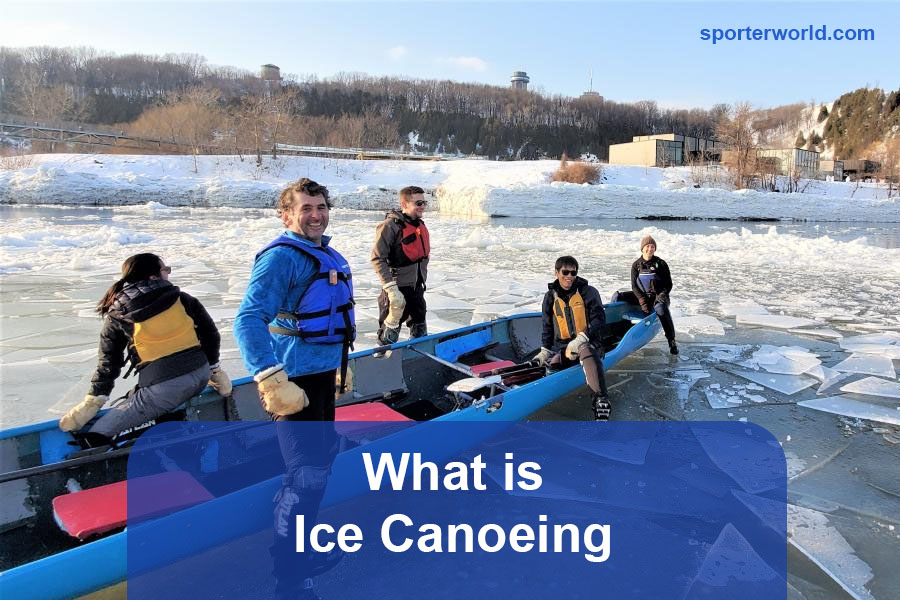Have you ever wanted to experience something completely unique to Canada? If so, have you heard of ice canoeing? Ice canoeing is a Canadian tradition that dates back more than 200 years. It is an icy version of open-water boat racing, where teams of paddlers race canoes across frozen rivers and lakes in extreme winter temperatures. Ice-canoe teams paddle in short sprints, paddling against the wind and across treacherous bodies of water.
Ice canoeing is an incredible and intense experience that will push participants to their limits; however, it is also incredibly rewarding for those brave enough to take part. In this article, learn more about the history behind this unique Canadian discipline and what’s needed to enjoy a successful day on the ice!
What is Ice Canoeing?
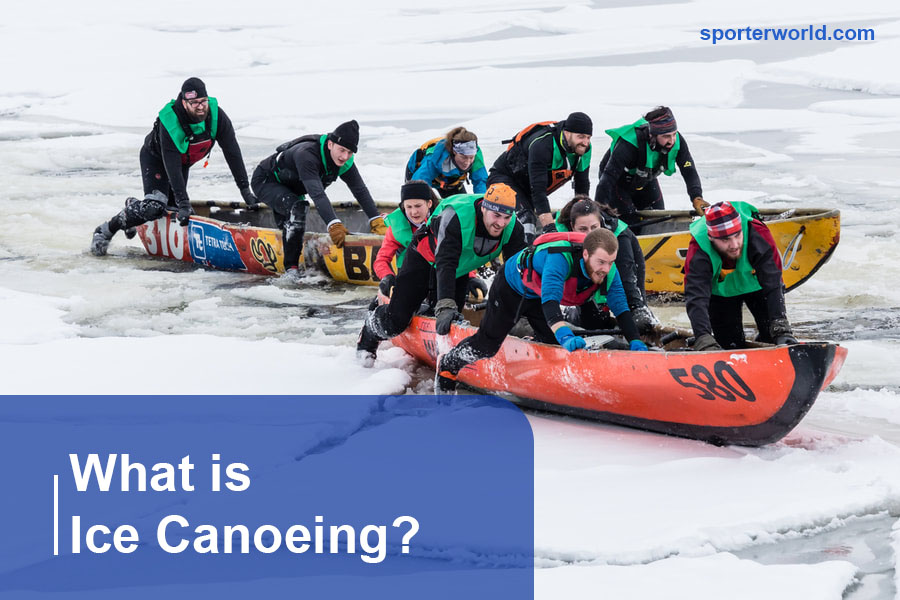
Ice canoeing is an exhilarating winter sport that originated to transport goods and people between the islands and shores of the Saint Lawrence River. Consisting of five athletes, ice canoeing involves alternately pushing the canoe across patches of the frozen river and paddling through powerful currents. Specialized shoes are worn with bolts screwed to the bottom for increased traction on the ice. This intense experience is made all the more challenging by formidable winds that blow massive chunks of ice onto their paths.
The strength, stamina, and skill needed for this unique sport make it incredibly physically and mentally demanding. Participants must be prepared to battle high tide levels up to fifteen feet deep and four-knot currents while mastering perfect timing for alternating pushes on different parts of the slippery terrain. It is no wonder why those courageous enough to embark on this thrilling journey never relinquish their devotion to this inspiring activity.
History of Ice Canoeing
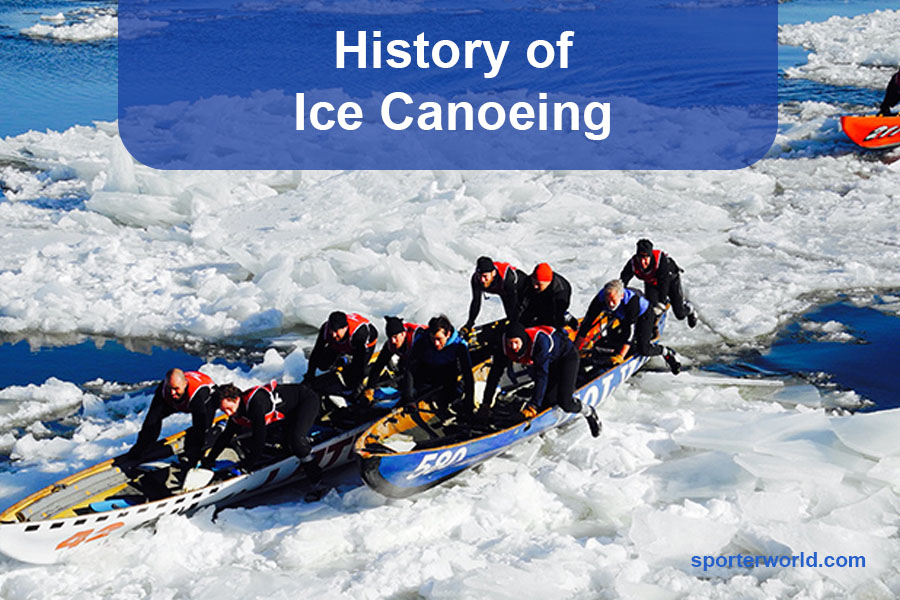
Ice canoeing is an activity that has long been embedded in the history of the Saint Lawrence River. Nowadays, it is a popular recreational activity and holds its place as a unique sport with an interesting past. The practice of ice canoeing began in New France in the 1600s and was used for transporting passengers and goods across the river when there was too much ice for ferries but not enough to form a bridge. It wasn’t until the 1860s at Lévis that about 200 canoers transported these items across the river. In Montreal, races were held during winter carnivals from 1988-1992.
The activity remained popular until steamboats took over as a means of transportation in the late 1800s and ended ice canoeing as its main function. Fortunately, some cities have kept up their yearly practice of ice canoe racing during winter festivities, such as Quebec City’s Winter Carnival, where they first held a race back in 1894. Today, though more recreational than transportational, ice canoeing remains alive, with races being hosted worldwide by different competitive clubs dedicated to keeping alive this unique cultural tradition shaped by its incredibly complex history.
How Ice Canoeing Helds?

Ice Canoeing is becoming a popular winter sport in Quebec. The Association des Coureurs en Canot à Glace du Québec (ACCGQ) was established to organize and standardize races and currently accredits six different events for competitors. The Grand Défi des Glaces is the most popular, held during the Quebec Winter Carnival in February. At this event, more than 40 teams compete on powerful currents, large chunks of ice, and cold water. Teams come from the Quebec City area where the event takes place and across other parts of Quebec.
This highly competitive sport has become known for courageous athletes braving challenging conditions to paddle through icy waters in search of victory. It is a thrilling experience for both spectators and participants alike as they watch canoes navigate through dangerous conditions, all while striving to reach the end first.
This event offers an exciting atmosphere and strengthens awareness of the importance of protecting our environment by using traditional methods like canoes and paddles rather than motorized vehicles. Ice canoeing continues to provide an exhilarating escape from the mundane day-to-day task while teaching its participants sportsmanship and respect for nature.
How Does Ice Canoeing Work?
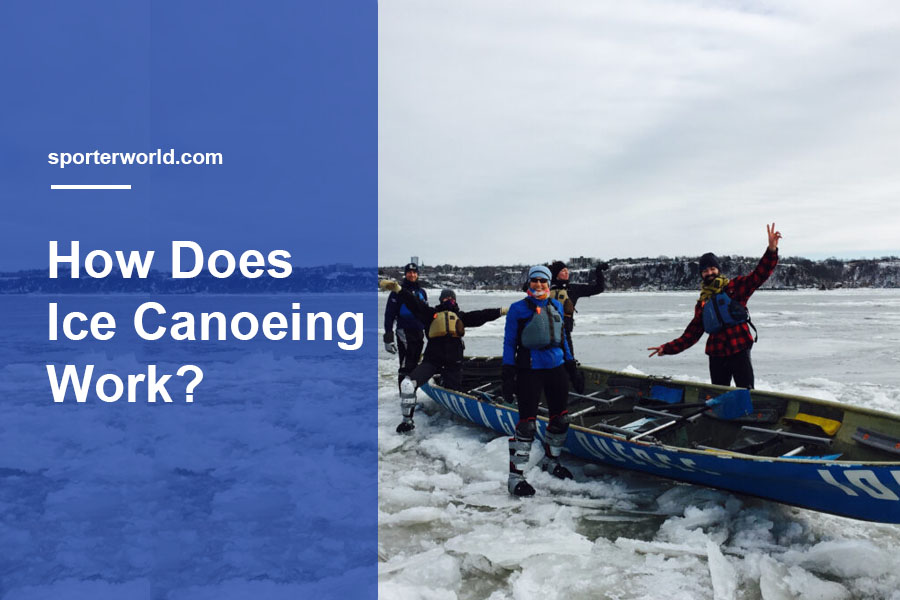
Ice canoeing, also known as ice canoe racing or ice canoeing, is a thrilling winter sport that involves navigating canoes on frozen bodies of water, typically rivers or lakes. Here’s how ice canoeing works:
- Equipment: Ice canoeing requires specialized equipment. The canoes used in ice canoeing are typically modified to adapt to icy conditions. They often feature steel runners or blades attached to the hull and keel to provide traction and prevent slipping on the ice. The paddles used are usually shorter and sturdier to handle the challenges of breaking through ice and maneuvering in icy conditions. Participants also wear appropriate clothing to protect themselves from the cold.
- Team Structure: Ice canoeing is a team sport involving teams of four to six members. Each team consists of paddlers and a “gunwale” or “gunner” who steers the canoe and assists in breaking the ice. Teamwork, coordination, and synchronization are crucial for success in ice canoeing.
- Ice Course: Ice canoeing courses are set on frozen rivers or lakes. The course is typically marked with challenges such as tight turns, slaloms, and obstacles. The length and difficulty of the course can vary depending on the event or competition. It requires skillful navigation through the icy terrain and strategic decision-making by the team.
- Technique: Ice canoeing requires a combination of paddling, pushing, and breaking through the ice. Paddlers use their paddles to propel the canoe forward and maneuver around the course. The gunner, positioned at the front or rear of the canoe, helps to break through ice obstacles by using their weight and sometimes even jumping on the ice. Timing and coordination are essential, as the team needs to work together to overcome obstacles and maintain speed.
- Racing Format: Ice canoeing events usually involve heat or races, similar to other racing sports. Teams compete against each other, starting at designated intervals. The objective is to complete the course in the shortest possible time. The race can be a point-to-point format or a circuit where teams complete multiple laps.
- Safety: Safety is a crucial aspect of ice canoeing due to the challenging conditions. Participants wear appropriate safety gear, including life jackets or personal flotation devices (PFDs), helmets, and warm clothing. Ice conditions are monitored to ensure they are safe for the event. Organizers and officials take precautions to minimize risks and provide necessary rescue measures.
Ice canoeing combines the thrill of canoeing with the unique challenges of navigating frozen water. Competing successfully in this exhilarating winter sport requires skill, physical strength, teamwork, and adaptability.
You Can Also Read: How To Play Gorodki?
Where Can I Do Ice Canoeing?
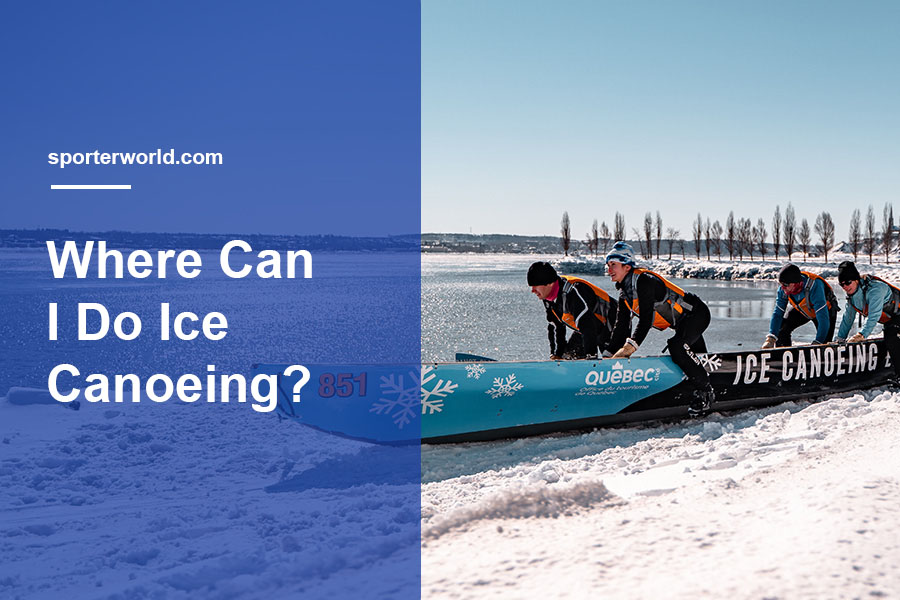
Ice canoeing is predominantly practiced in regions with cold climates and frozen bodies of water during winter. Some popular locations for ice canoeing include:
- Canada: Ice canoeing has its roots in Canada, particularly in the province of Quebec. The Quebec Winter Carnival, held in Quebec City, is a notable event that features ice canoe races on the frozen St. Lawrence River. Other regions in Canada with suitable conditions for ice canoeing include parts of Ontario, Manitoba, and Alberta.
- Northern Europe: Countries like Finland, Sweden, Norway, and Russia, where freezing temperatures and icy conditions are common, offer opportunities for ice canoeing. The sport may be practiced on frozen lakes, rivers, or even along coastal areas with frozen waters.
- Northern United States: States in the northern part of the United States, such as Minnesota, Wisconsin, Michigan, and Alaska, experience winter conditions conducive to ice canoeing. Local winter festivals and events may organize ice canoe races on frozen lakes or rivers.
It’s important to note that ice canoeing is a niche sport, and the availability of organized events or dedicated locations may vary. Local ice canoeing clubs or winter sports associations in the regions above are good resources for finding information about ice canoeing opportunities, training, and events. It’s recommended to check local regulations and safety guidelines before participating in ice canoeing activities.
Frequently Asked Questions
1. Is ice canoeing safe?
Like any sport, ice canoeing carries certain risks, and safety precautions must be taken. Participants must wear safety gear, including life jackets, personal flotation devices (PFDs), and helmets. The ice conditions and weather are monitored to ensure they are safe for the event. Organizers may also implement safety measures such as assigning safety personnel, conducting ice thickness tests, and establishing emergency protocols. Following safety guidelines, receiving proper training, and participating in organized events are essential to minimize risks and ensure a safe ice canoeing experience.
2. Do I need prior canoeing experience to try ice canoeing?
Prior canoeing experience is beneficial but not always necessary to try ice canoeing. Basic paddling skills and teamwork are transferable from traditional canoeing, but adjustments and adaptations are required for icy conditions. It’s recommended to take part in beginner or introductory ice canoeing programs or receive guidance from experienced ice canoeists to learn the necessary techniques and safety protocols specific to ice canoeing.
3. What kind of clothing should I wear for ice canoeing?
Appropriate clothing is crucial for comfort and protection during ice canoeing. Layering is key to regulating body temperature and accommodating the physical exertion involved. Start with a moisture-wicking base layer, followed by insulating mid-layers like fleece or wool. An outer shell or waterproof jacket and pants are essential to shield against wind, water, and icy spray. Don’t forget to wear warm, insulated gloves or mittens, thermal socks, and boots suitable for cold conditions. It’s also important to have spare clothing available in case of unexpected immersion or weather changes.
4. Can I rent or borrow equipment for ice canoeing?
Renting or borrowing ice canoeing equipment may be possible, depending on the availability and location. In regions where ice canoeing is popular, there might be local outfitters, sports clubs, or winter sports centers that offer equipment rentals. However, due to the specialized nature of ice canoeing equipment, it may not be as widely accessible as standard canoes or kayaks. It’s recommended to contact local ice canoeing clubs or winter sports organizations to inquire about rental options or seek guidance on acquiring suitable equipment.
Conclusion
Ice canoeing is an exciting winter sport that can be enjoyed in certain regions of the United States. Following safety protocols and taking necessary precautions during ice canoeing activities is important. Prior canoeing experience may be helpful but not required, and suitable equipment and clothing should be obtained before participating. Resources such as local clubs or organizations are a good starting point for finding information about ice canoe ing opportunities, training, and events.
